
Practical Text Comparison Guide for Content Editors
How to Compare Text Versions: A Complete Guide for Content Editors
Estimated reading time: 8 minutes
- Text comparison tools save hours by flagging differences between document versions.
- Color-coded diffs (green additions, red deletions) and visual highlighting speed review.
- Semantic analysis detects paraphrases and meaning-level similarity beyond exact matches.
- Integrate comparison into workflow to reduce errors and improve collaboration through incremental checks.
- Choose tools by use case: free online tools for quick checks, desktop and AI tools for complex or sensitive work.
Understanding Text Comparison and Why It Matters
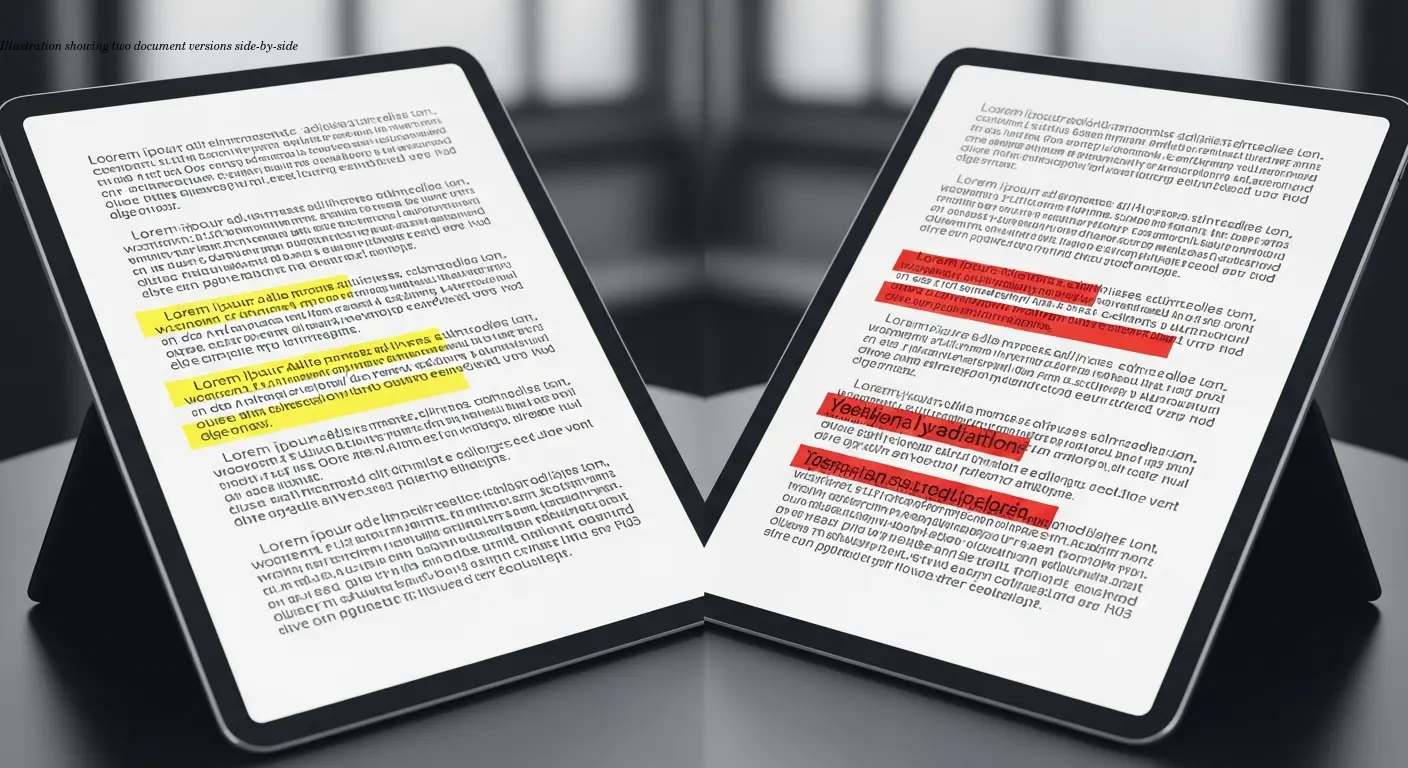
Text comparison is the process of analyzing two or more versions of the same content to spot exactly what changed. For content editors this can be a time-saver and an accuracy booster: instead of re-reading a whole article, a diff tool highlights added sentences, deleted lines, and even tiny punctuation changes.
Many editors already use built-in features such as Google Docs' version history or Microsoft Word's Track Changes; dedicated diff tools often provide finer control and clearer visualizations. The value is simple: tools catch what human eyes miss—small wording swaps, misplaced commas, or format differences that can alter meaning or presentation.
Types of Text Comparison Methods You Should Know

Different comparison methods fit different needs. Below are the common approaches editors encounter.
Exact string matching
The most basic method compares characters or tokens directly. If one letter differs, it's flagged. This is ideal for catching copy-paste errors, unauthorized edits, and precise textual changes.
Semantic analysis
Semantic tools look at meaning rather than literal text. They can recognize paraphrasing—e.g., "the cat sat on the mat" vs. "a feline rested on the rug"—and are useful when preserving intent or detecting recycled content matters.
Structural comparison
Structural comparison examines sentence construction and document layout. Use this when maintaining voice, style, or formatting consistency across multiple contributors.
Code diff
Line-by-line diffs (common in development) are precise and show exact insertions and deletions. They're useful for scripts, HTML, or any text where line breaks and exact placement matter.
Essential Text Diff Tools for Content Editors
Pick a tool based on frequency, file types, and sensitivity. Quick online tools are great for one-off checks; desktop apps and AI platforms handle scale and nuance.
- Online quick checks: browser-based comparators (e.g., Text Compare!) for instant results.
- Desktop power tools: Beyond Compare for folders, tables, and merge operations; Code Compare for Git integration.
- AI and plagiarism: Copyleaks and Originality.ai use machine learning to find paraphrasing and AI-generated text.
- Hybrid tools: DiffNow offers online and desktop options with syntax highlighting.
Building Text Comparison Into Your Content Editing Workflow
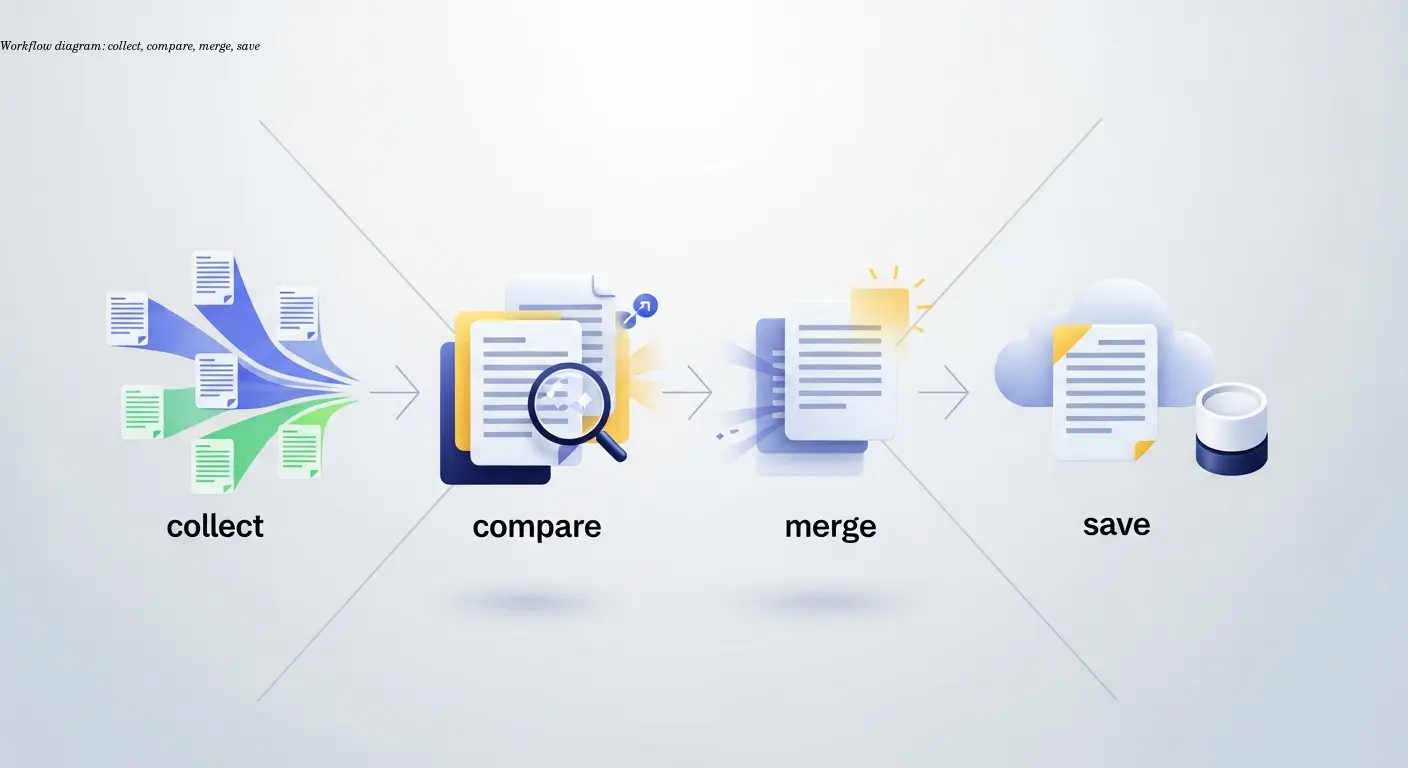
Make comparison routine, not optional. Start each session by comparing the new draft with the previous version. Use clear file naming (e.g., article_v1.txt, article_v2.txt) and keep versions in a single location.
Run the diff, review highlighted changes in context (don't just skim), and use merge tools to accept or reject edits. Save the result with a new version number and a brief note explaining significant decisions to maintain a useful audit trail.
Common Challenges and How to Address Them
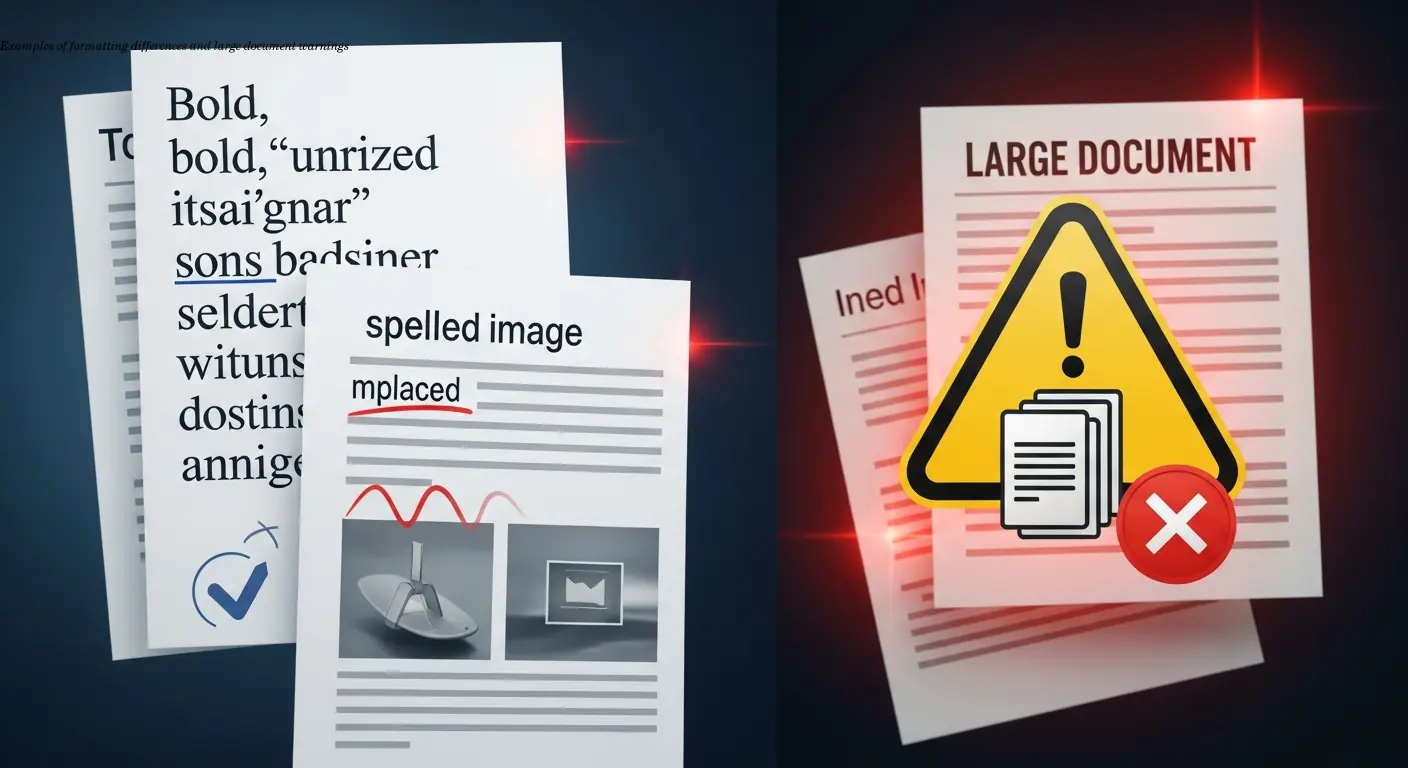
Several pitfalls recur:
- Formatting noise: Convert files to the same format (plain text if possible) before comparing to avoid thousands of false positives from formatting codes.
- Large files: Use desktop software or split documents into sections to avoid browser crashes and slow performance.
- Semantic ambiguity: Choose semantic tools when meaning matters; otherwise, exact diffs may overwhelm with changes that don't affect intent.
- Version sprawl: Maintain strict naming and sequence (v1→v2→v3) or use version control like Git to keep history clear.
Advanced Features That Make a Real Difference

Look beyond simple highlights. Valuable advanced features include:
- Customizable visual highlighting (side-by-side, inline, color schemes).
- Multi-format support so you can compare Word, PDF, HTML, and plain text without manual conversion.
- API access to automate recurring comparisons and integrate with a CMS or monitoring scripts.
- Three-way merging to reconcile edits from multiple contributors while preserving a clear merge history.
Choosing the Right Tool for Your Needs
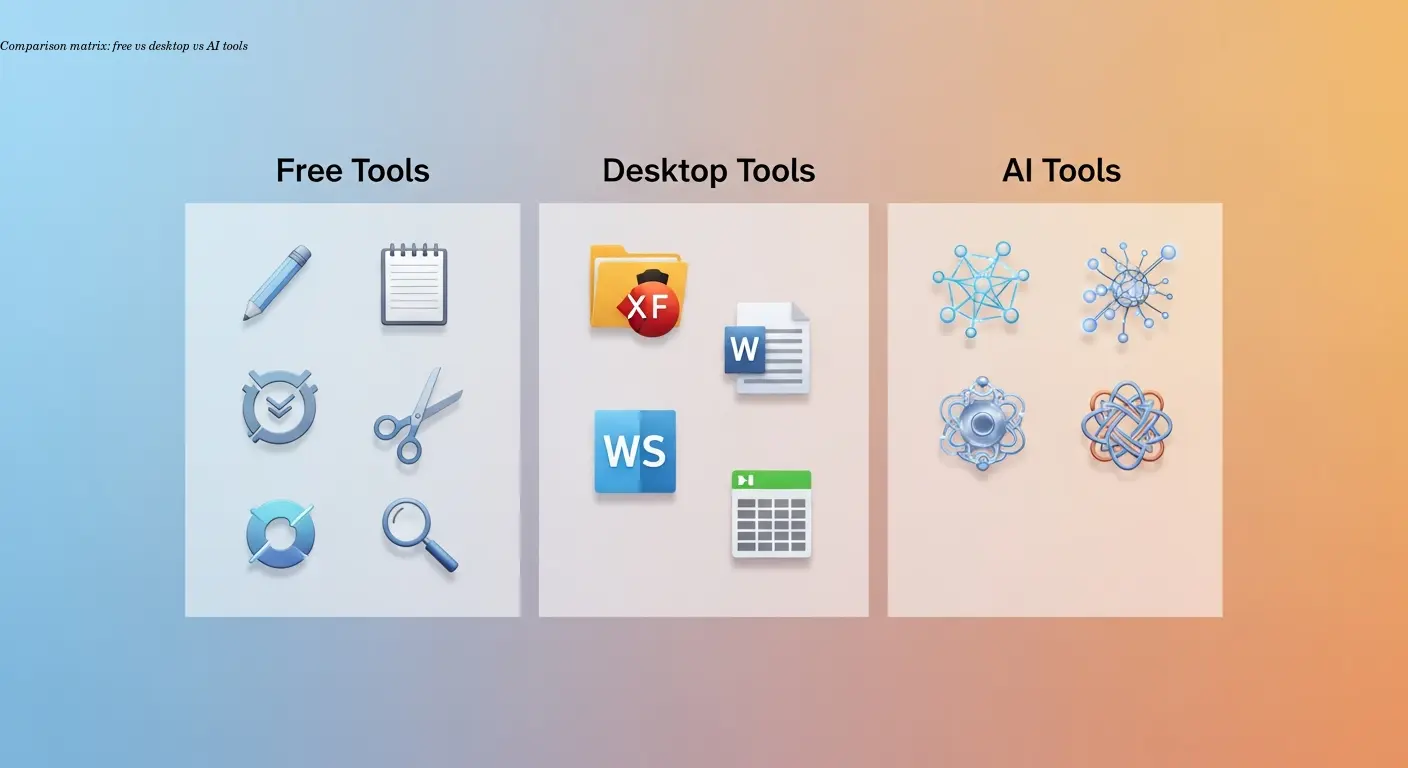
Match tool capabilities to constraints:
- Free online tools (Text Compare!, DiffNow) are excellent for occasional checks but involve uploading content to external servers.
- Desktop software (e.g., Beyond Compare) is faster, handles larger files, and keeps data local — useful for confidential projects.
- AI services (Copyleaks, Originality.ai) add semantic detection and plagiarism checks for teams that need authenticity verification.
- Integration matters: choose tools with APIs or direct connections to Google Docs, WordPress, or your CMS to eliminate manual steps.
Practical Tips for Better Text Comparison Results
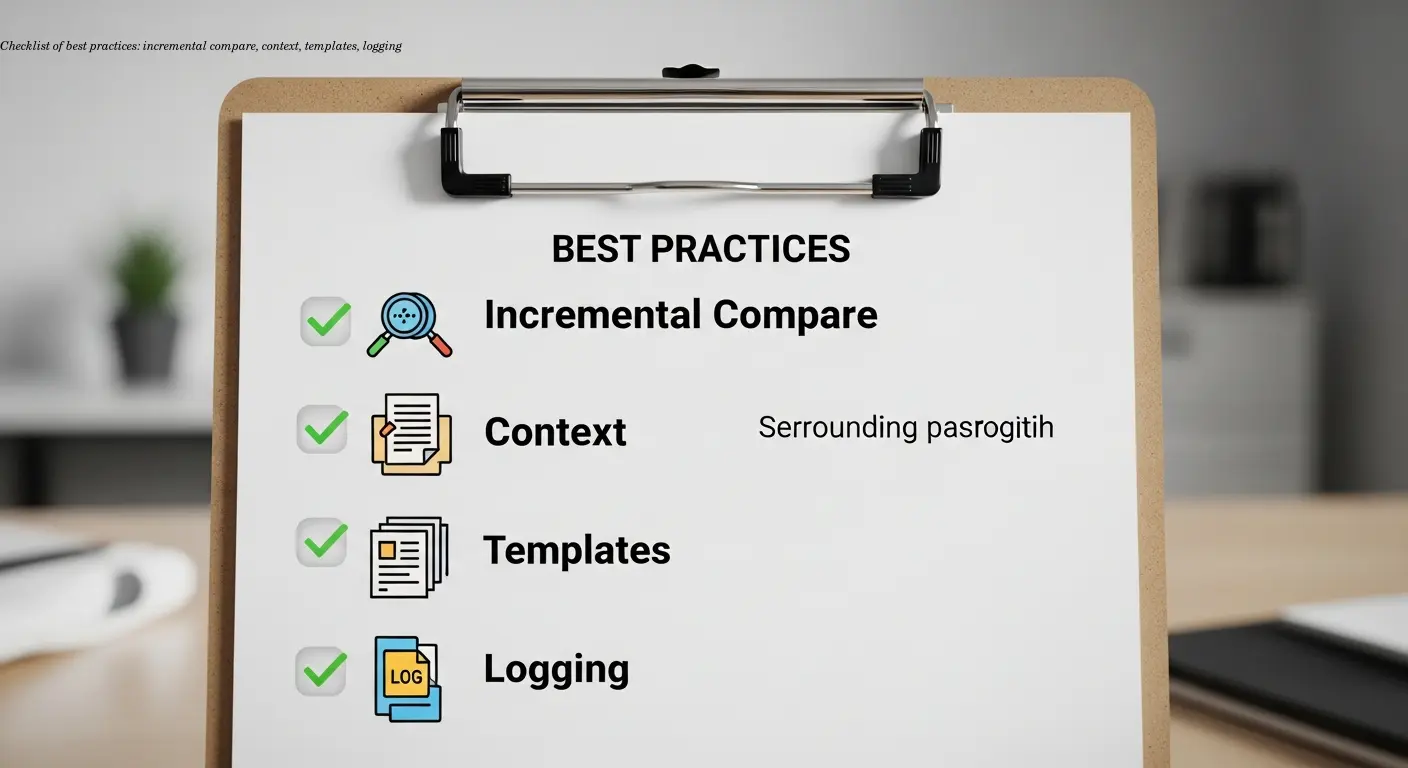
Best practices to adopt immediately:
- Compare incrementally: review v1→v2, v2→v3 to track evolution and isolate where changes were introduced.
- Read in context: check a sentence or two on either side of any highlighted change to ensure flow and sense.
- Use templates: save comparison settings for recurring document types to ensure consistent checks.
- Document merge decisions: keep a short log explaining why you accepted or rejected significant changes.
Frequently Asked Questions
What's the difference between text comparison and document diff?
They're essentially the same thing. "Text comparison" is the general term for analyzing differences between any text content, while "document diff" usually refers specifically to comparing formatted documents like Word files or PDFs. Both use similar underlying techniques to identify what's changed between versions.
Can text diff tools detect paraphrased content?
Basic tools only catch exact or near-exact matches. Advanced tools with semantic analysis can detect paraphrased content by analyzing meaning rather than just matching words. Tools like Copyleaks and Originality.ai use AI to spot when content has been reworded but retains the same ideas.
How do I compare text files if they're in different formats?
You have two options: convert both files to the same format (plain text usually works best), or use a tool that supports multiple formats natively. Beyond Compare and similar advanced tools can compare different file types directly without conversion.
Are online text comparison tools safe for confidential documents?
That depends on the tool and your security requirements. Free online tools upload your content to their servers, which may not be acceptable for sensitive information. For confidential work, use desktop software that keeps all data on your local machine, or choose online tools that explicitly guarantee privacy and encryption.
How can I integrate text comparison into my content management system?
Look for text diff tools that offer API access. You can use the API to automatically compare documents when they're updated in your CMS. Some platforms like WordPress have plugins that add comparison functionality directly. For custom solutions, you might need a developer to build the integration using the tool's API documentation.
What's the best free text comparison tool?
For quick online comparisons, Text Compare! and DiffNow are both excellent free options. For desktop use, many editors use the free version of WinMerge (Windows) or FileMerge (Mac). The "best" tool depends on your specific needs—online tools are convenient but limited, while desktop tools offer more features but require installation.
Can I compare more than two text versions at once?
Some advanced tools support three-way comparison, where you compare two edited versions against a common original. This is useful for merging changes from multiple contributors. Comparing four or more versions simultaneously is rare and usually requires specialized software or custom scripting.
How do I handle text comparison for really large documents?
Large files need desktop software with good performance optimization. Split massive documents into sections if your tool struggles. Some editors compare documents chapter by chapter or section by section, which is slower but more reliable than trying to process a 200-page file all at once. Cloud-based tools with serious server power can also handle large comparisons better than local machines.
Related Articles

Essential proofreading tool to spot version changes
Discover how a proofreading tool and text comparison speed up edits, catch errors, and protect document accuracy—practical tips from experienced editors.

Practical Content Version Control for Managers
Master content version control with proven naming, feedback and SOP tactics - practical guidance for Content Managers, trusted by sports teams.
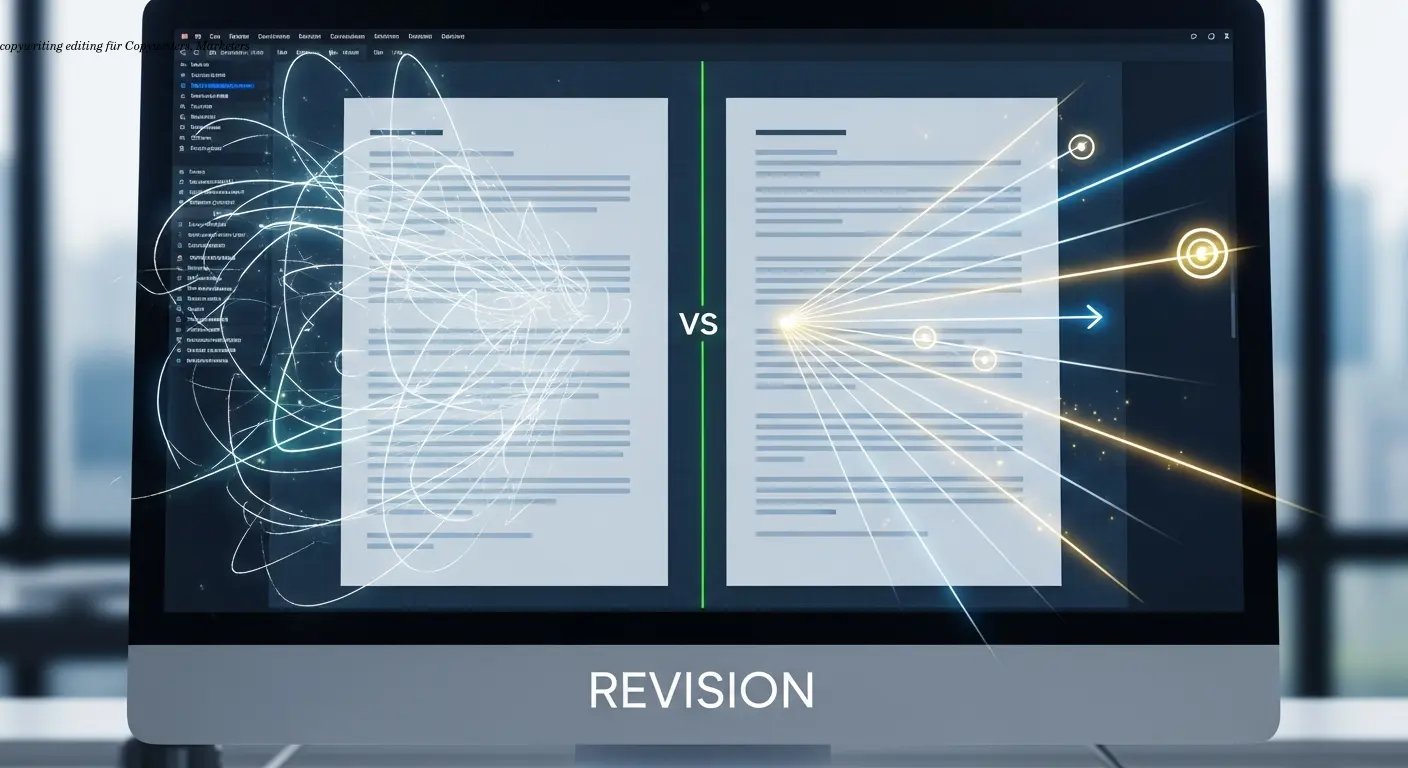
Copywriting Editing Guide to Comparing Drafts Like a Pro
Sharpen copywriting editing with draft comparison, the Four Cs, line edits, version control and A/B testing to deliver clearer, higher-converting copy.